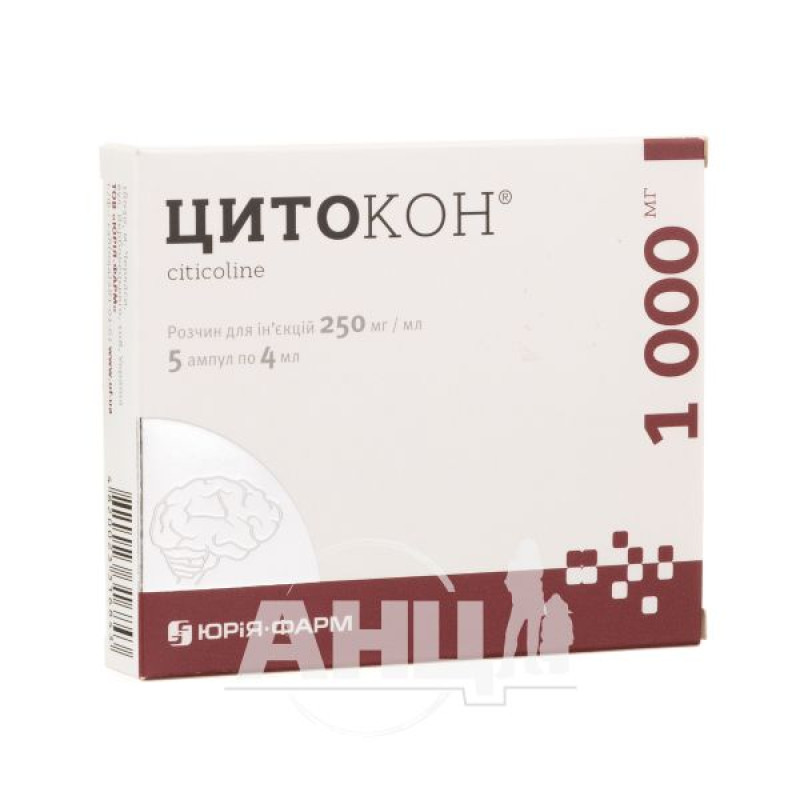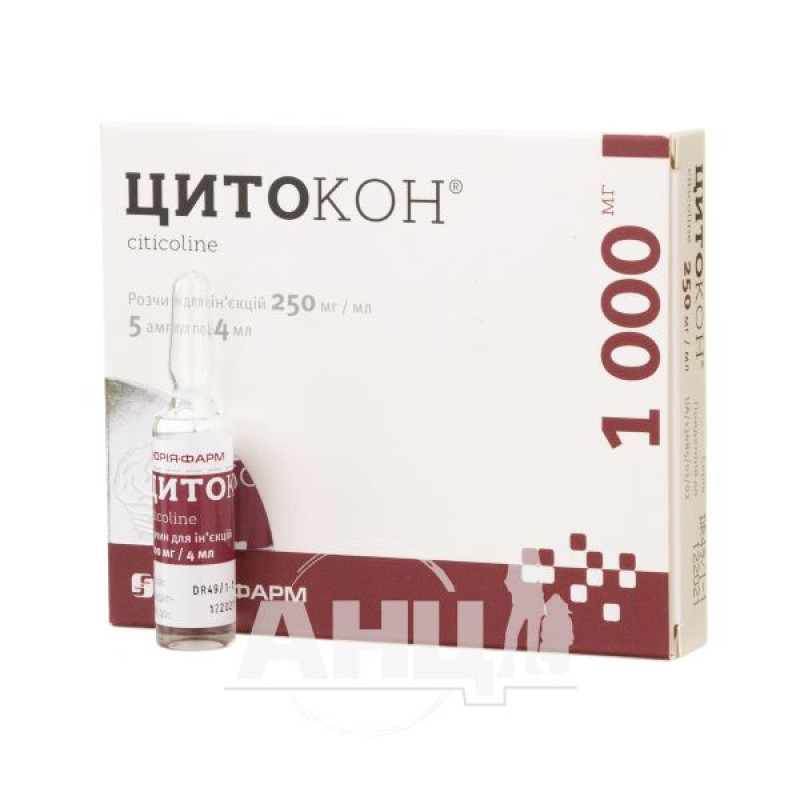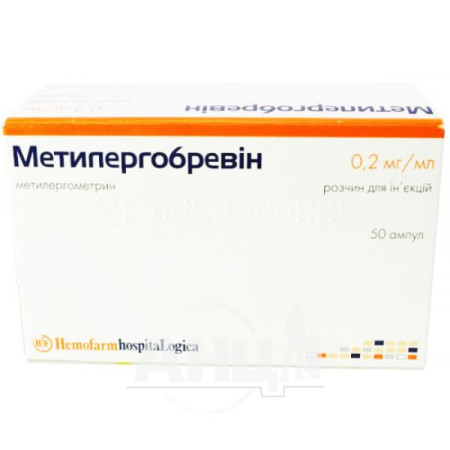Cytocon solution for injection 250 mg/ml ampoule 4 ml No. 5

Pharmacological properties
Pharmacodynamics. Citicoline stimulates the biosynthesis of structural phospholipids in the membrane of neurons, which contributes to the improvement of membrane functions, including the functioning of ion-exchange pumps and neuroreceptors. Due to its stabilizing effect on the membrane, citicoline has anti-edematous properties, therefore it reduces brain edema. Research results have shown that citicoline inhibits the activity of some phospholipases, prevents the residual occurrence of free radicals, prevents damage to membrane systems and ensures the preservation of the protective antioxidant system.
Citicoline reduces the volume of damaged tissue, preventing cell death by acting on apoptosis mechanisms, and improves cholinergic transmission. Citicoline also has a preventive neuroprotective effect in focal brain strokes.
Citicoline promotes rapid functional rehabilitation of patients with acute cerebral circulation disorders, reducing ischemic damage to brain tissue, which is confirmed by the results of X-ray studies.
In case of traumatic brain injuries, citicoline shortens the duration of the recovery period and reduces the intensity of post-traumatic syndrome.
Citicoline helps increase the level of brain activity, reduces the level of amnesia, and improves the condition of cognitive, sensory, and motor disorders that occur with cerebral ischemia.
Pharmacokinetics. Citicoline is well absorbed after oral, intramuscular and intravenous administration. After administration of the drug, a significant increase in the level of choline in the blood plasma is observed. When administered orally, the drug is almost completely absorbed. Studies have shown that the bioavailability after oral and parenteral administration is almost the same.
The drug is metabolized in the intestines and liver to form choline and cytidine. After administration, citicoline is absorbed by brain tissues, while choline acts on phospholipids, cytidine - on cytidine nucleoids and nucleic acids. Citicoline quickly reaches brain tissues and is actively incorporated into cell membranes, cytoplasm and mitochondria, activating the activity of phospholipids.
Only a small amount of the administered dose is excreted in the urine and feces (3%). About 12% of the administered dose is excreted through the respiratory tract. The excretion of the drug with urine and through the respiratory tract has 2 phases: 1st phase - rapid excretion (with urine - during the first 36 hours, through the respiratory tract - during the first 15 hours), 2nd phase - slow excretion. The main part of the drug dose is involved in metabolic processes.
Indication
- acute phase of cerebrovascular disorders and treatment of complications and consequences of cerebrovascular disorders;
- traumatic brain injury and its consequences;
- neurological disorders (cognitive, sensitive, motor) caused by cerebral pathology of degenerative and vascular origin.
Application
For intravenous or intramuscular administration.
The recommended dose for adults is 500-2000 mg/day.
Treatment: the first 2 weeks, 500-1000 mg 2 times a day, then - 500-1000 mg 2 times a day i / m. The maximum daily dose is 2000 mg.
In acute and emergency conditions, the maximum therapeutic effect is achieved when the drug is administered in the first 24 hours.
The recommended course of treatment, in which the maximum therapeutic effect is observed, is 12 weeks.
The dosage of the drug and the duration of treatment depend on the severity of the brain lesions and are determined by the doctor individually.
Intravenous administration is administered in the form of a slow injection (over 3-5 minutes, depending on the dose administered) or a drip intravenous infusion (40-60 drops per minute).
Elderly patients do not require dose adjustment.
Contraindication
Hypersensitivity to the components of the drug; increased tone of the parasympathetic nervous system.
Side effects
From the psyche: hallucinations.
From the nervous system: severe headache, dizziness.
From the cardiovascular system: arterial hypertension, arterial hypotension, tachycardia.
From the respiratory system: dyspnea.
Gastrointestinal tract: nausea, vomiting, diarrhea.
General disorders: chills, edema, allergic reactions, including: rash, purpura, itching, angioedema, anaphylactic shock; hyperthermia, increased sweating, changes at the injection site.
Special instructions
In case of persistent intracranial hemorrhage, the dose of 1000 mg/day and the infusion rate (30 drops per minute) should not be exceeded.
The drug is used immediately after opening the ampoule. The ampoule with the drug is intended for single use only. The remaining drug must be destroyed.
Use during pregnancy and breastfeeding. There are no sufficient data on the use of Cytocon in pregnant women. Data on the excretion of citicoline into breast milk and its effect on the fetus are unknown. Therefore, during pregnancy and breastfeeding, the drug is prescribed only when the expected benefit to the mother outweighs the potential risk to the fetus.
Children. There is insufficient data on the use of Cytocon in children. The drug is used in cases of extreme necessity, when the expected benefit from use outweighs the potential risk.
Ability to influence the reaction speed when driving vehicles or using other mechanisms. In some cases, some adverse reactions from the central nervous system may affect the ability to drive vehicles and operate machinery.
Citicoline enhances the effect of levodopa. The drug should not be administered simultaneously with drugs containing meclofenoxate.
Incompatibility: The drug should not be mixed with other drugs in the same container.
Overdose
Not described.
Storage conditions
At a temperature not exceeding 30 °C.
There are no reviews for this product.
There are no reviews for this product, be the first to leave your review.
No questions about this product, be the first and ask your question.




